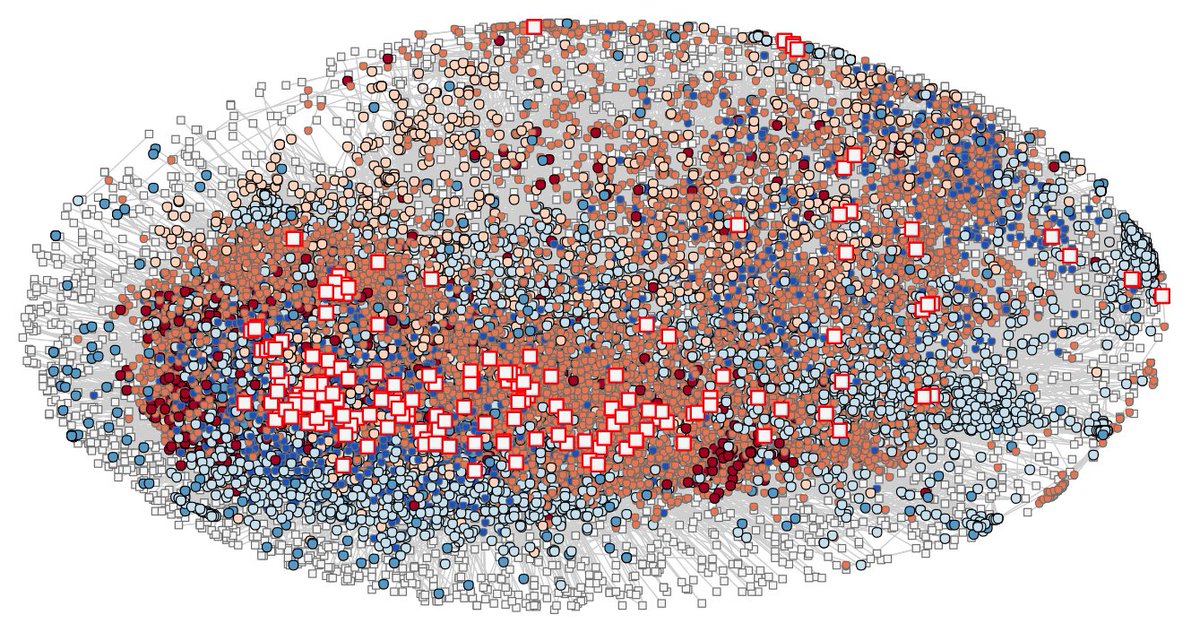In normal times, connections between students on a college campus are an asset. During a pandemic, they are not.
My paper with Ben Cornwell on the structure of course enrollment networks @Cornell now out @SociologicalSci ( #OA): https://www.sociologicalscience.com/articles-v7-9-222/
1/n">https://www.sociologicalscience.com/articles-...
My paper with Ben Cornwell on the structure of course enrollment networks @Cornell now out @SociologicalSci ( #OA): https://www.sociologicalscience.com/articles-v7-9-222/
1/n">https://www.sociologicalscience.com/articles-...
I& #39;ve tweeted about this paper before, but thought it& #39;d be useful to update now that paper is peer-reviewed & published.
Teaser for regular readers: last tweets in today& #39;s thread reflect on findings in light of "reopening" conversation of last week+. 2/ https://twitter.com/WeedenKim/status/1258894522127396866">https://twitter.com/WeedenKim...
Teaser for regular readers: last tweets in today& #39;s thread reflect on findings in light of "reopening" conversation of last week+. 2/ https://twitter.com/WeedenKim/status/1258894522127396866">https://twitter.com/WeedenKim...
Key findings: the average Cornell student shares courses with a max of 529 other students over a week of classes. (Actual will be lower, because attendance is not 100%.)
This increases to 600 students if just look at undergrads, because grad courses typically smaller. 3/
This increases to 600 students if just look at undergrads, because grad courses typically smaller. 3/
In the university network including grads and undergrads, only 2% of all possible pairs of students take the same course, but 59% are connected indirectly through one other student (2 steps), and 92% are connected in 3 steps or fewer.
Move over, 6 degrees of Kevin Bacon. 4/
Move over, 6 degrees of Kevin Bacon. 4/
Connectivity is even greater in the undergrad network: 99.8% of student pairs are reachable in 3 steps, and virtually all student pairs are connected by more than one path. Student A may be connected to Student B through Student C, but also through Students D, E, and/or F.
5/
5/
Teaching courses of 100+ students online reduces the share of student pairs that can reach each other in 3 steps to 78%.
Teaching courses of 30+ online reduces share reached in 3 steps to 21%, increases average path length to 3.8.
A Rorschach result.
6/
Teaching courses of 30+ online reduces share reached in 3 steps to 21%, increases average path length to 3.8.
A Rorschach result.
6/
Networks in Cornell& #39;s liberal arts college (4.4K), UMich (30K; @ulisrael1 @TimMcKayUM), and a small SLAC (2K; Sean Tennant) have similar structure, although the average number of other students co-enrolled w/ focal student is, unsurprisingly, lower in @CornellCAS and SLAC.
7/
7/
Caveat: Course networks are just one of many sources of connections among students, faculty, and staff.
Also, Ben and I don& #39;t formally model spread, account for <100% attendance or physical distance within classrooms, assess other parameters that affect outbreak risk.
8/
Also, Ben and I don& #39;t formally model spread, account for <100% attendance or physical distance within classrooms, assess other parameters that affect outbreak risk.
8/
So. Colleges can reduce connectivity in the small world network of college campus through hybrid models of instruction (some courses on-line, others F2F), but not eliminate it.
Key questions are about relative risk under different scenarios, how else risk can be reduced.
9/
Key questions are about relative risk under different scenarios, how else risk can be reduced.
9/
Conversation about face-to-face instruction in fall needs to be upfront about the risks, recognize they aren& #39;t borne equally, debate appropriate tolerance. Hiding behind rhetoric of moral imperatives or deploying wartime analogies to justify "sacrifice" is ... disingenuous.
/fin
/fin

 Read on Twitter
Read on Twitter


